And I really like Gravekeeper's in Goat Format.
If you've followed my writing at all, you'll know that I posted an article about Gravekeeper's on Pojo.com a while back. I then posted a follow-up article that made some changes to the original build. You can follow those links to read more about my approach to Gravekeeper's and why I chose to build the deck the way I did. I don't think the deck is perfect, but it did do what I wanted it to do: it started discussion about the deck and turned some heads.
This article is going to be a bit different than most of my other articles. I want to first highlight my second build - Anteaus' Gravekeeper's 2.0 - and talk about what worked and what didn't. I didn't do that in my Gravekeeper's Revisited article for Pojo - I just talked about why I made the changes I made. But the more I played with my 2.0 build, the less I liked it, and the more I wanted to change it.
So I'm going to talk about my 2.0 build, what I thought worked well and what didn't, and then I'm going to debut my new Gravekeeper's deck below. If you're interested just in the latest version of my Gravekeeper's, you can skip the analysis of the 2.0 build and just go straight to 3.0.
Gravekeeper's in Goat Format
| Gravekeeper's 2.0 (Anteaus Build) | |
|---|---|
| Monsters | D.D. Assailant x2 D.D. Warrior Lady x1 Exiled Force x1 Gravekeeper's Assailant x2 Gravekeeper's Guard x3 Gravekeeper's Spear Soldier x2 Gravekeeper's Spy x3 Mystic Swordsman LV2 x1 Tsukuyomi x3 |
| Spells | Book of Moon x3 Graceful Charity x1 Heavy Storm x1 My Body as a Shield x3 Necrovalley x3 Nobleman of Crossout x2 Pot of Greed x1 Reinforcement of the Army x1 Terraforming x1 |
| Traps | Ceasefire x1 Mirror Force x1 Rite of Spirit x2 Solemn Judgment x2 Torrential Tribute x1 |
Before we Begin...
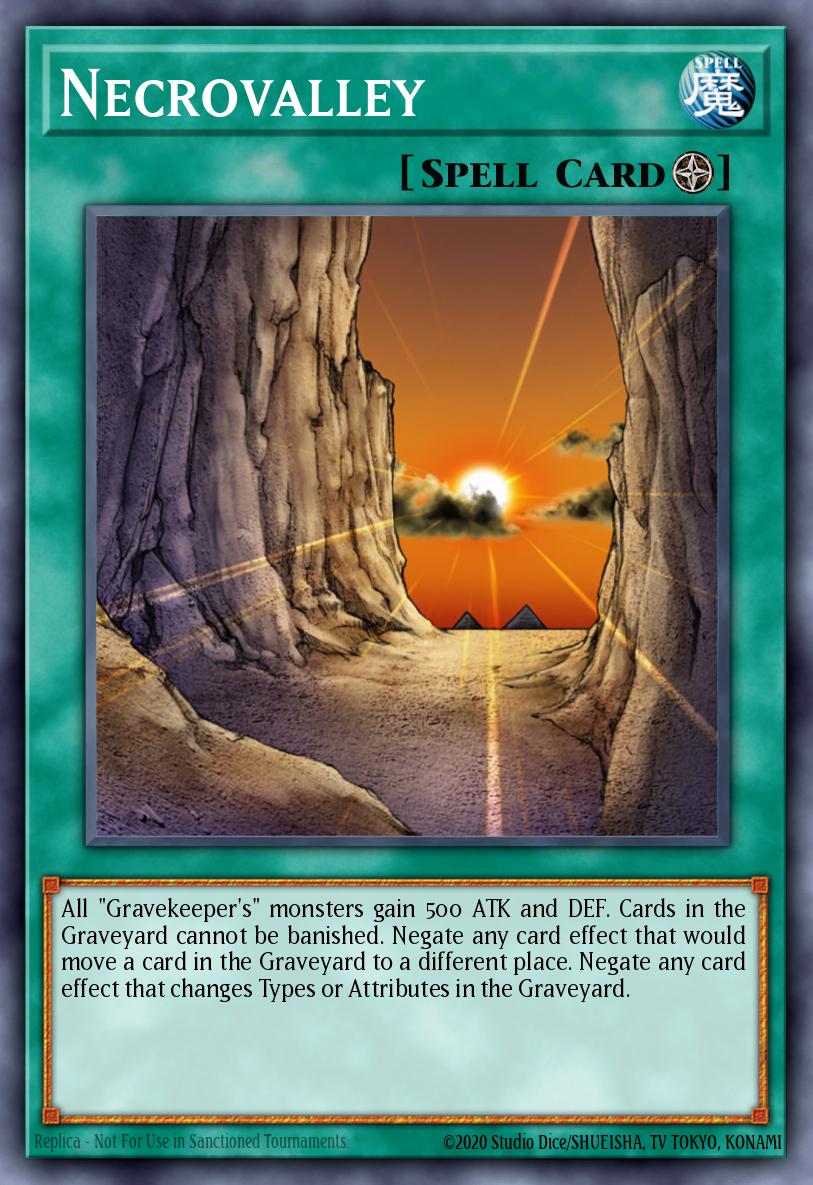 When I first started figuring out how to improve Gravekeeper's, I had to figure out what kind of deck it was. Gravekeeper's are interesting because they're a combination of control and aggro. Spy has 2000 DEF, Guard has 1900 DEF, and Necrovalley shuts down the Graveyard. Immediately, we get the impression that GK is a control deck first and foremost. When I first started messing with the deck, that's what I thought, too.
When I first started figuring out how to improve Gravekeeper's, I had to figure out what kind of deck it was. Gravekeeper's are interesting because they're a combination of control and aggro. Spy has 2000 DEF, Guard has 1900 DEF, and Necrovalley shuts down the Graveyard. Immediately, we get the impression that GK is a control deck first and foremost. When I first started messing with the deck, that's what I thought, too.Upon further examination, however, it's clear that Gravekeeper's aren't control - they're aggro. They're a swarm deck. They're meant to bide their time, build up a field, and swing for a ton of damage. The fact that they can also act as a control-style deck only works in the deck's favor.
But make no mistake - GK is an aggro deck, built to swarm, and that's what I tried to take advantage of with how I approached the deck.
The issue with GK as a swarm deck is that it's highly vulnerable to cards like Nobleman of Crossout. It's also vulnerable to early aggression against it, as many times, GK has to "wall up" before they can make a big push. This is something that I tried to mitigate. I asked myself, "how can I make GK more aggressive in the early game?"
Enter the Warrior Toolbox. It's aggressive, it's great in the early game, and it gives you other options than "set Spy, set backrow, pass." Which isn't always a bad thing. But with GK you have to protect your Spy, so you don't want to set it under threat of Nobleman of Crossout unless you have to.
Gravekeeper's in Goat Format - The Basic Strategy
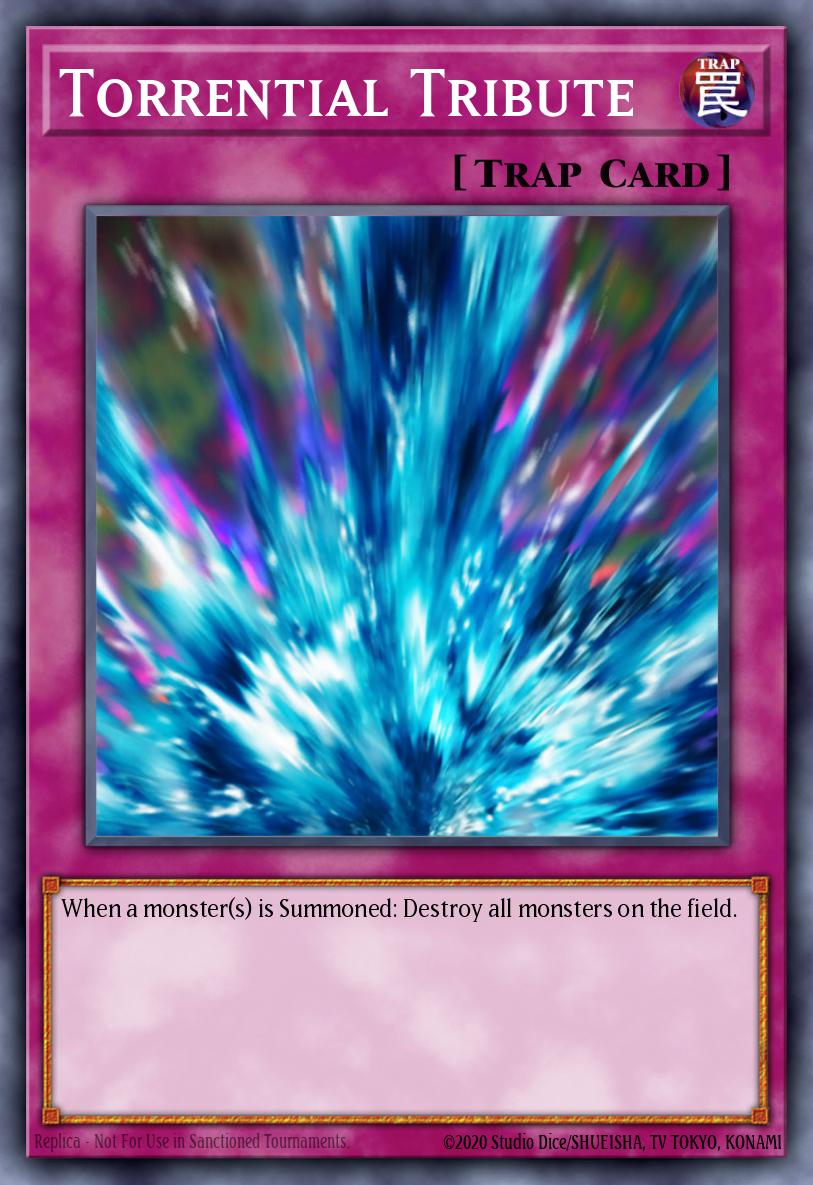 The basic strategy of my build is this: I don't care what you run, I'm going to power through it anyway. This strategy is a bit out there, but it works really well. Think about the common traps that players fall into - Sakuretsu Armor, Mirror Force, Torrential Tribute, Book of Moon, Chaos monsters. As duelists, we use these cards almost exclusively to make our board position better. And you're sitting there saying "well, duh!"
The basic strategy of my build is this: I don't care what you run, I'm going to power through it anyway. This strategy is a bit out there, but it works really well. Think about the common traps that players fall into - Sakuretsu Armor, Mirror Force, Torrential Tribute, Book of Moon, Chaos monsters. As duelists, we use these cards almost exclusively to make our board position better. And you're sitting there saying "well, duh!"But here's the thing: we rely on these so heavily that many duelists simply play around them.
Look at how Goat Format is today. We rarely see big fields of monsters staring down face-down backrow. That's by design - no one wants to go -2 or -3 to an opposing Mirror Force. No one wants to commit a second or third monster to the board just to walk into a Torrential Tribute. That is common thinking, and in the mirror match, that's exactly how you want to play.
Goat Format is all about the numbers, right? You want to go plus on your plays. You want to run cards that help you go plus. You want to avoid going negative. If you have more cards than your opponent, you're ahead, and you're winning. Right?
These are all common tropes in Goat Format, and are a big reason why Goat Control is such a successful deck. But my Gravekeeper's deck turns that whole concept on its head. Gravekeeper's can't play the advantage game. If you take that mindset into a matchup against Goat Control, playing this build, you're not going to win a lot of games. Gravekeeper's have to commit too hard to the board to make those plays effectively.
That's why, with my GK deck, you want to walk into those traps, because you run three copies of My Body as a Shield, which has quickly become a near-staple of Gravekeeper's in Goat Format.
Why My Body as a Shield?
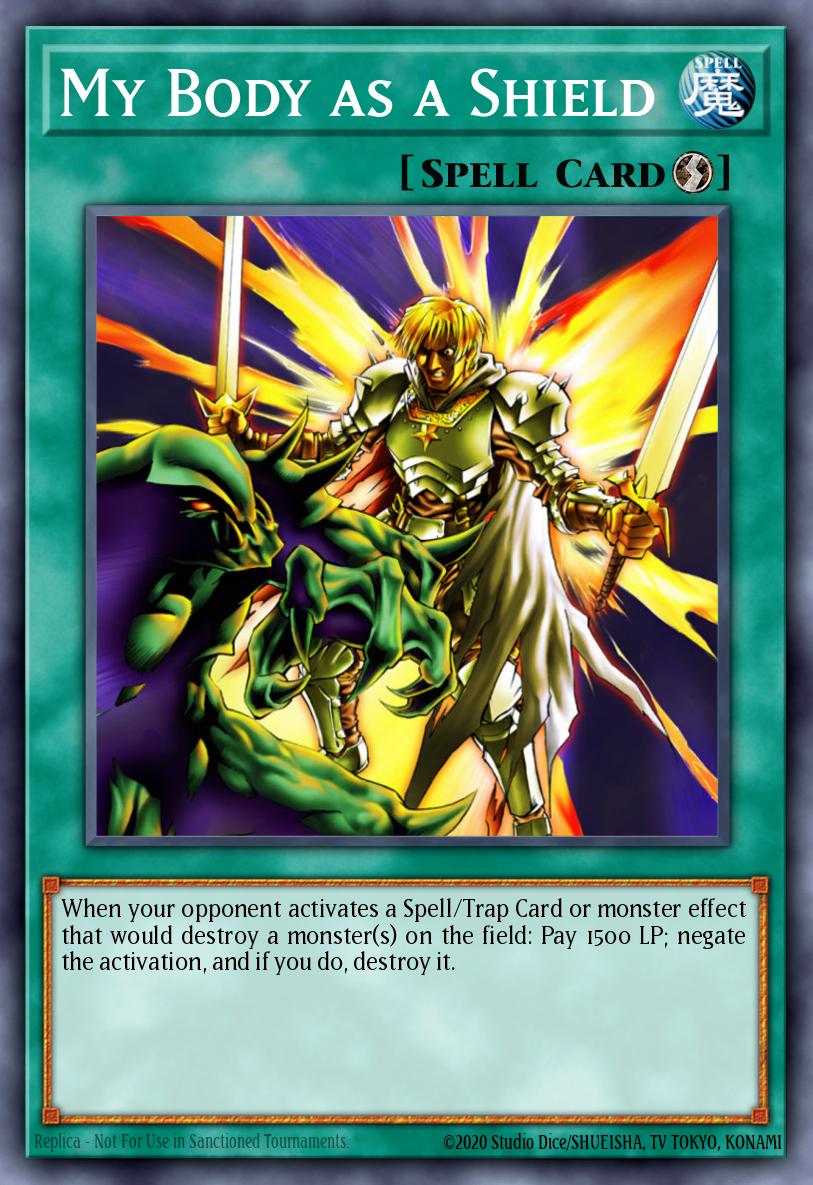 My Body as a Shield is a great card. A Quick-Play Spell that can negate card destruction effects? For a deck that tempts Torrential Tribute with every flip of Gravekeeper's Spy, it's a godsend. My Body allows Gravekeeper's to operate the way they're meant to in the sense that you can swarm with impunity.
My Body as a Shield is a great card. A Quick-Play Spell that can negate card destruction effects? For a deck that tempts Torrential Tribute with every flip of Gravekeeper's Spy, it's a godsend. My Body allows Gravekeeper's to operate the way they're meant to in the sense that you can swarm with impunity.It also protects your main searcher, Gravekeeper's Spy, from devastating effects like Nobleman of Crossout, as well as any other face-down monsters. Most importantly, it allows you to make pushes despite the threat of Torrential Tribute or Mirror Force. That's one of the best ways to play it. You let your opponent set their trap, you walk into it, and then you spring this and win the game.
It's demoralizing.
I will say this, though: My Body as a Shield does not stop Mystic Swordsman LV2. This is something that I erroneously said it did stop back when I wrote my first Gravekeeper's article for Pojo. And to be fair, it kind of looks like it would stop it based on card text at the time, but a deeper dive into the rulings back in 2005 made it clear that it does not.
So you can't rely on My Body as a Shield in Damage Step, which is okay, because the interaction with Mystic Swordsman LV2 is one of the few I can think of where that applies. All the rest of the stuff that it stops happens, well, not in the Damage Step. So it's still a definite 3-of.
The Elephant in the Room
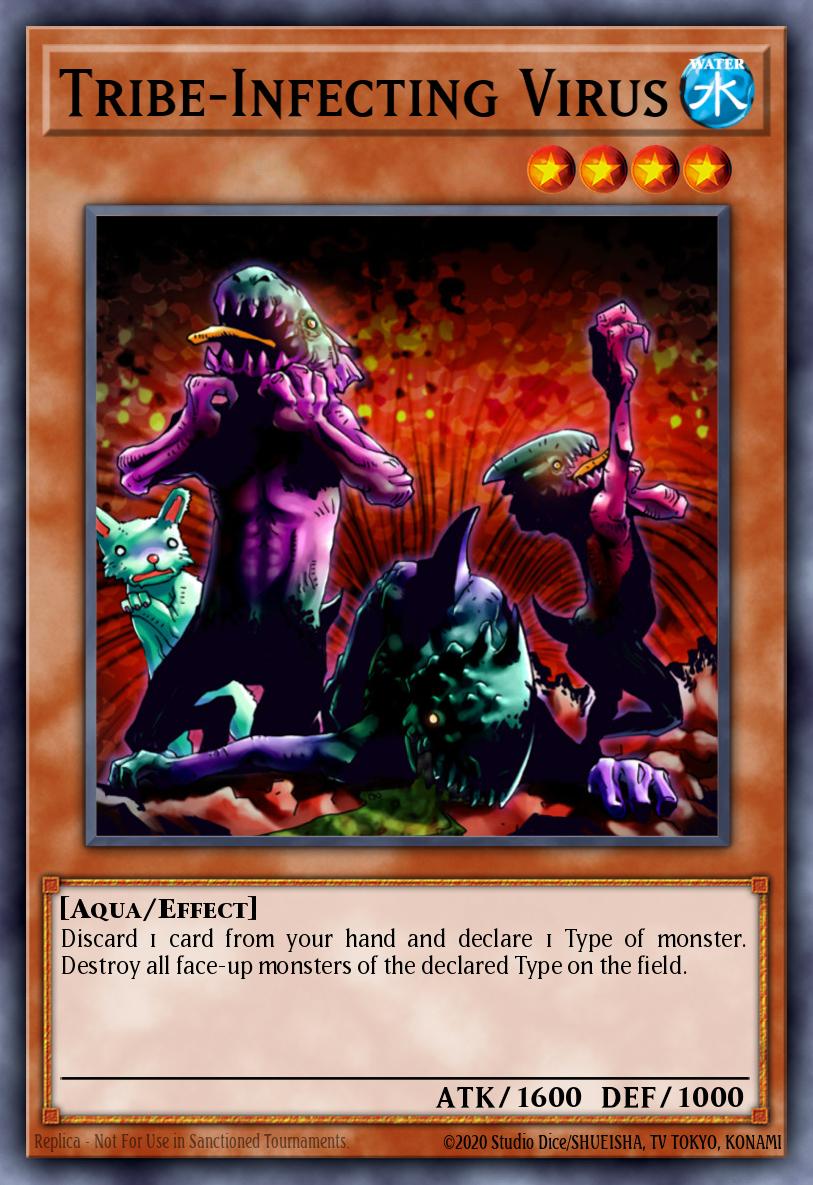 If you're wondering why the deck lacks so many "power cards" like Breaker and Duo and the like, it's easy: it doesn't need those cards. It really doesn't. Breaker the Magical Warrior is a great card - one of the best in the format. The same goes for Delinquent Duo, and Tribe-Infecting Virus, and Ring of Destruction. But just because those cards are fantastic cards in and of themselves does not mean that they belong in every deck. Sometimes, you have to use addition by subtraction.
If you're wondering why the deck lacks so many "power cards" like Breaker and Duo and the like, it's easy: it doesn't need those cards. It really doesn't. Breaker the Magical Warrior is a great card - one of the best in the format. The same goes for Delinquent Duo, and Tribe-Infecting Virus, and Ring of Destruction. But just because those cards are fantastic cards in and of themselves does not mean that they belong in every deck. Sometimes, you have to use addition by subtraction.We don't want to just destroy backrow with this deck. We want to force our opponent into activating their trap cards so we can negate them with either My Body as a Shield or Solemn Judgment.
But why?
It's really quite simple: we cannot, under any circumstances, waste our cards. We can't have a backrow killer destroying a piece of bait. And when you're playing Gravekeeper's, opponents have a tendency to set multiple backrow. This is because Gravekeeper's don't like to lose backrow, so GK often sets more than one backrow at a time. Opponents set up to our number of backrow, or at least get close to it, because they're "safe" from Heavy Storm. And better players will set redundancies, like Torrential and Mirror Force both, since they don't have to worry about Heavy dropping.
At least, that's the conventional theory.
(As an aside, this is also why we run Heavy in GK - setting up for a "pro Heavy" play is a lot easier when your opponent isn't expecting you to nuke your own Necrovalley.)
But they'll also set bait, because why not? If you're staring down a GK field with two monsters, one of which is a Spy, and three backrow, or two backrow plus a Necrovalley, why not set multiple monsters? Why would GK intentionally drop a Heavy to go -1 or -2 and also lose Necrovalley?
We have to assume our opponents are decent players. So we can't just assume they'll make mistakes. But we can assume that they'll have useless cards like Call of the Haunted or Premature Burial set while Necrovalley is up. Not only does the opponent set up for the removal of Necrovalley, but those set recursion cards act as bait until it's gone. This is really, really common - show strength by setting bluffs and forcing your opponent to attack into multiple backrow.
And that's why we play My Body as a Shield, and why we don't play backrow killers.
Gravekeeper's want you to have useless cards, while negating your useful cards, which in turn makes your useful cards useless too. But if we just run Dust Tornado or Breaker or Mystical Space Typhoon, we run the risk of wasting them by hitting useless cards. This is the exact same reason we don't play Duo - why discard cards that the opponent could just end up finding useful down the line? Why not just force them to either keep them in hand or set them as bluffs?
This kind of thinking goes against a lot of long-standing Goat Format conventions. But sometimes, you have to break the rules to forge new paths.
The Warrior Toolbox
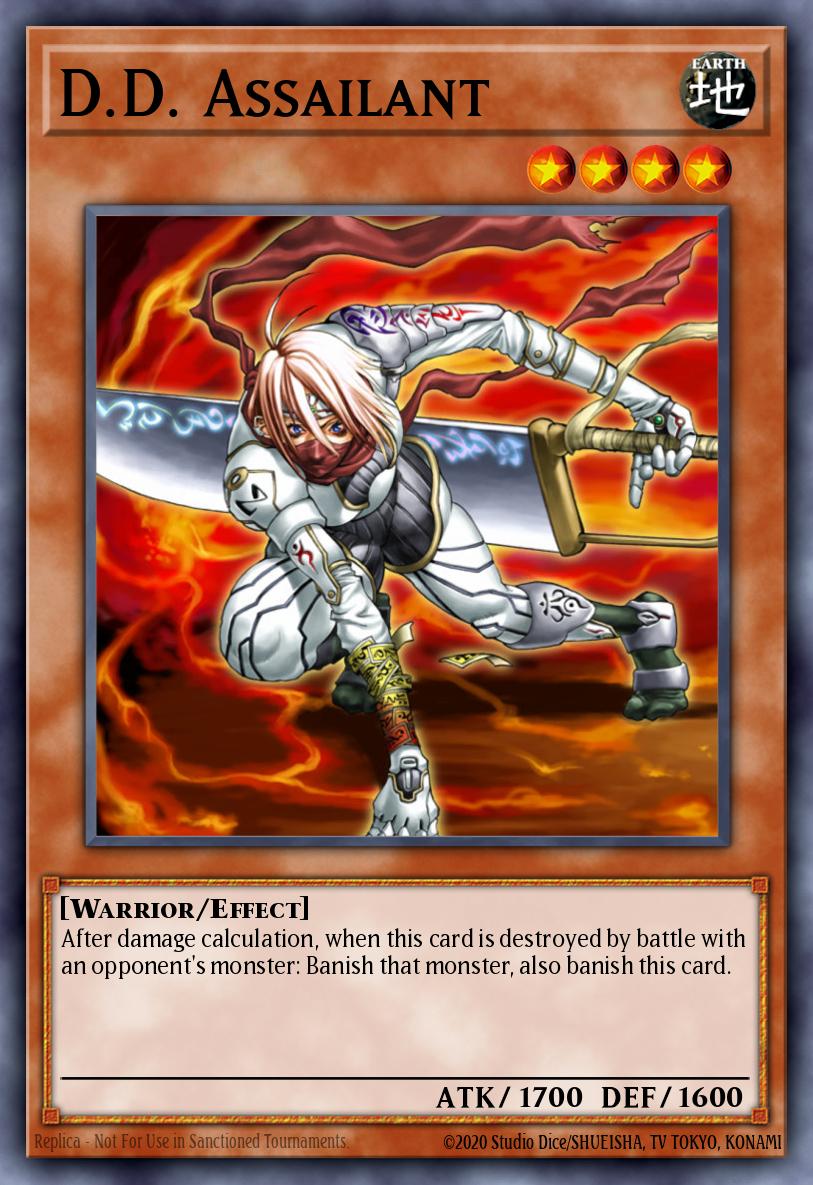 Alright, I guess I do have to talk about it.
Alright, I guess I do have to talk about it.The Warrior Toolbox is a versatile addition to a limited archetype. Look at the Gravekeeper's that we run - we only run four. Of those, two are Flip monsters. The other two are fairly generic 1500 ATK monsters that don't do much without Necrovalley. With just these cards, the reliance on Necrovalley becomes all too obvious. And relying on a Field Spell, in a format chock full of backrow hate, is a recipe for disaster.
But note that your most versatile monster is a Flip monster as well. This immediately makes the deck incredibly weak to Nobleman of Crossout, which I keep bringing up because it's a really big weakness. Losing Spy to a Nobleman is pretty much an instant loss because you lose your ability to swarm.
This is why we use the Warrior Toolbox. It allows Gravekeeper's to establish board presence reliably. D.D. Assailant isn't all that great. I used to think it was, but it doesn't do much outside of remove a threat. Which, to be fair, is a really good effect to have. But whereas D.D. Assailant is extraneous in a deck like Goat Control, it shines in an aggressive deck that seeks to establish its own tempo while also controlling the board.
If you've ever played a modern variation of the Beastdown or Zoo deck in Goat Format, you know how versatile D.D. Assailant can be. It's no different here.
But then you look at the rest of it - D.D. Warrior Lady, Mystic Swordsman LV2, Exiled Force. These cards are great additions to the deck and are searchable with Reinforcement of the Army. But they're not generic tools or monsters to just drop whenever you feel like it. They are meant to be used surgically. This is why I feel that one copy of Reinforcement of the Army is not enough - same with one copy of Mystic Swordsman LV2. But we'll address that in a little bit.
For now, let's just say that the Warrior Toolbox is a perfect addition to a deck like this. It allows us to establish board presence early, while also giving us the ability to get rid of problematic monsters or devious Flips and other set cards with Mystic Swordsman. It takes the pressure off of Spy and the rest of the GK monsters and allows us more freedom to do what we need to do.
Anteaus' Gravekeeper's 3.0
Now I want to showcase some of the changes I think would make the deck even more potent. At this point, though, the strategies are set, so mostly all I'm tweaking are ratios. There are some cards that might be useful in the deck, and if they aren't in the main they'll likely be in the side.
I'll post the deck first, and then talk about some of the changes.
| Gravekeeper's 3.0 (Anteaus Build) | |
|---|---|
| Monsters | D.D. Assailant x2 D.D. Warrior Lady x1 Exiled Force x1 Gravekeeper's Assailant x2 Gravekeeper's Guard x1 Gravekeeper's Spear Soldier x2 Gravekeeper's Spy x3 Mystic Swordsman LV2 x2 Tsukuyomi x2 |
| Spells | Book of Moon x3 Graceful Charity x1 Heavy Storm x1 My Body as a Shield x3 Necrovalley x3 Nobleman of Crossout x2 Pot of Greed x1 Reinforcement of the Army x2 Terraforming x1 |
| Traps | Ceasefire x1 Mirror Force x1 Rite of Spirit x2 Solemn Judgment x2 Torrential Tribute x1 |
Anteaus' Gravekeeper's 3.0 Explained
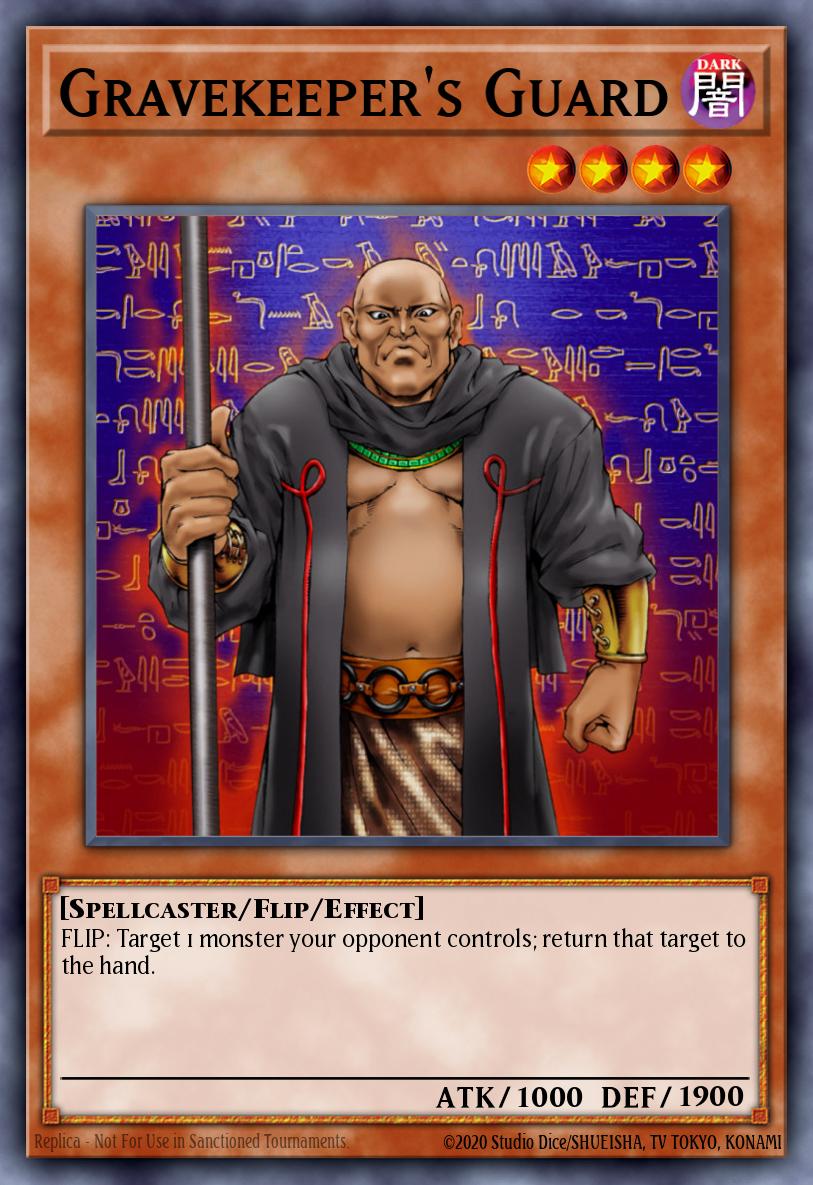 Okay, the changes from 2.0 are pretty minimal, all things considered. Gravekeeper's Guard gets bumped down to one copy. When it was at three the deck just reverted to "wall up until you can break out," which is the exact opposite of what I wanted to do when I set out to revamp this deck in the first place.
Okay, the changes from 2.0 are pretty minimal, all things considered. Gravekeeper's Guard gets bumped down to one copy. When it was at three the deck just reverted to "wall up until you can break out," which is the exact opposite of what I wanted to do when I set out to revamp this deck in the first place.Don't get me wrong - Gravekeeper's Guard is an amazing card, and I think the deck should be packing at least two. But one copy can go in the side deck, or you can drop a Ceasefire for it, I suppose. But regardless, Guard is a secondary tactic - your main goal should be to establish presence early and establishing your ability to swarm once you get into the midgame.
The triple Guard was followed with triple Tsukuyomi, but I cut back down to two copies because it's not a card you actually want three of in your deck. At three, you end up getting clogged hands, and while baiting a Nobleman is a great use of an extra Tsuk, at the end of the day that goes against my mindset of "no wasted cards."
Make no mistake - you have to play carefully with Gravekeeper's. They're a deck that can punish you for misplays, especially considering you're running triple My Body as a Shield and double Solemn Judgment. But with so many negation cards and the ability to wall up, you can compensate for that passive play by exploding in the midgame once you get your board established. GK can swing the game like few other decks, which is part of the reason I love it so much. Gravekeeper's are one of the few decks that can turn a one-monster board into a four-monster board, all of which have at least 1500 ATK.
All the previous versions had some kink in them that made them not exactly what I wanted to see. For instance, I played Dekoichi in v1.0 and v1.1. I tried Zaborg in v1.2 and v1.3. I tried other cards in 2.0. Ultimately, they all felt extraneous.
Now this deck feels more rounded and more balanced. It has more options with the Warrior Toolbox, for instance. It has better recovery and less reliance on Flip monsters once again. All the basic strategies that I outlined in my two Pojo articles are still intact. But here, they're more refined.
Conclusion
Ultimately, this deck is probably the best that GK will get. At least, the aggro version. Other people have seen success with control variants, using cards like Trap Dustshoot, Royal Tribute, and even Mind Crush. So I'm not saying that the deck is "solved" or anything. I'm not even saying that it's Tier 1. What I am saying, though, is that if you're going to make GK more aggressive, this is probably the best way to do it.
That's it for this time. As always, you can read more articles of mine right here on YGOPRODeck.com, or you can email me at any time at [email protected]. I'm also on Discord if you want to drop me a line, and don't forget to bookmark us for all the latest in Goat Format, modern Yu-Gi-Oh!, Duel Links, and more.




